
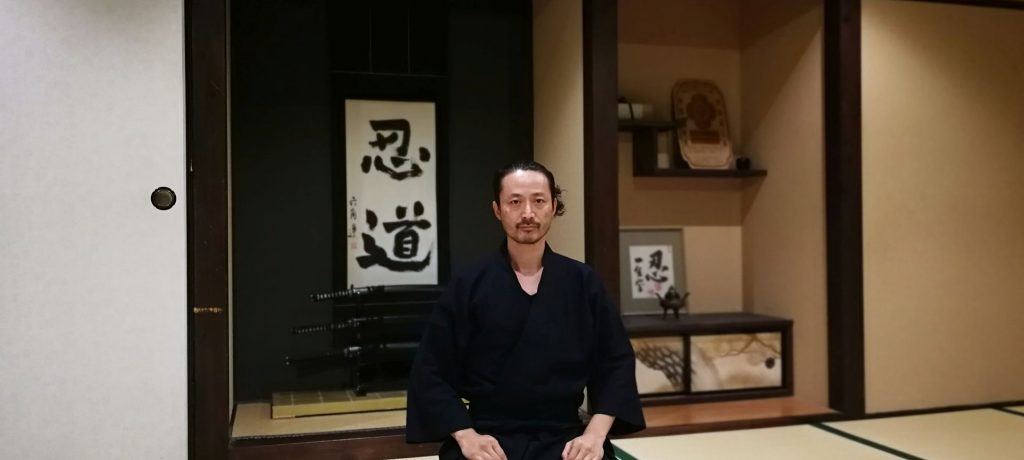
Today, we look at Kyoto through the eyes of Izo-san, a modern day ninja, originally from Iga, an area renowned for ninja. He runs a Ninja dojo in Kyoto, teaching authentic ninja martial arts, knowledge and philosophy.
“Not that many written records about ninja exist. However, in my family’s case, six generations ago, one of my ancestors appears to have been a ninja. He lived in Tsuge, a village in north Iga, a renowned area ninja lived over countless centuries. If you look at the family register, you can trace back my family name, Ichikawa, to at least six generations. Where it gets very interesting is when I was told about a scroll with information about ninja that mentioned the name Ichikawa Nidennomaki, an ancestor of mine.
This is in the possession of my master. Many ninjitsu styles and schools existed but stopped passing down their ninjitsu teachings around the beginning of the Meiji era (1868-1912), My master however, is the only person to have continued to receive direct ninjitsu teachings from his family. He is the Iga-Koga ryu soke or head of Iga-Koka ninjitsu style. The scroll he has states my ancestor, Ichikawa Nidennomaki, taught ninjitsu to the famous ninja Tateoka Dojyun. Tateoka lived in the village next to Ichikawa Nidennomaki’s village. Today, my family is the only one with the name Ichikawa and the only family that lived and continues to live in the north Iga area. Although it’s supposition, there is a strong possibility I’m the descendant of the ninja, Ichikawa Nidennomaki.”
To be clear, there is no direct line of ninja connected to Izo-san. However, based on an educated guess, Izo-san was born and raised in Iga and the existence of the scroll stating Nidennomaki taught ninjitsu to legendary Tateoka Dojyun, indicates Izo-san is a descendent of ninja. He now learns and practices Iga-Koka ryu style of ninjitsu.
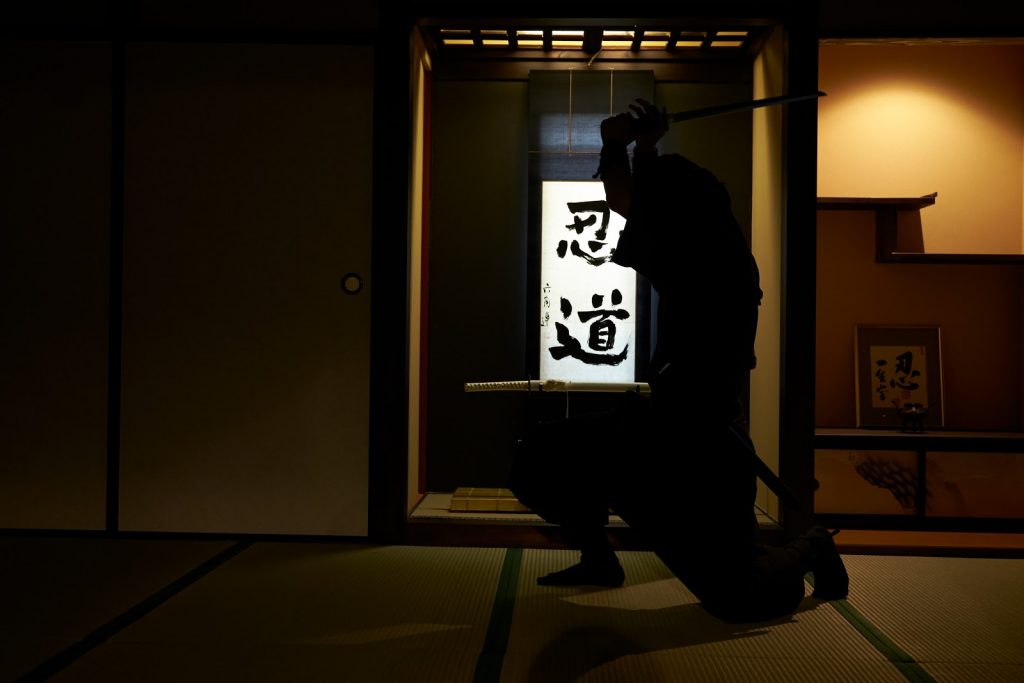
“The image of ninja most people have now a-days stems from comics and movies of the late 1800s, early 1900s. Although true, ninja being hired as assassins is played up for entertainment’s sake, to make movies and comic stories more exciting.
Actually, a Ninja’s main mission was to collect information, similar to CIA agents but depending on the time, a ninja’s mission might have also included an order to assassinate or use guerrilla warfare. Missions involving assassinations and more aggressive tactics started around the Warring States Period in the late 1400s and continued up to the late 1500s. Ninja studied and practiced ninjitsu, a combination of mental, spiritual and martial arts skills, the ninja used to carry out a wide array of missions. These skills were paramount for the ninja’s survival and ability to adapt to the demands of their times.
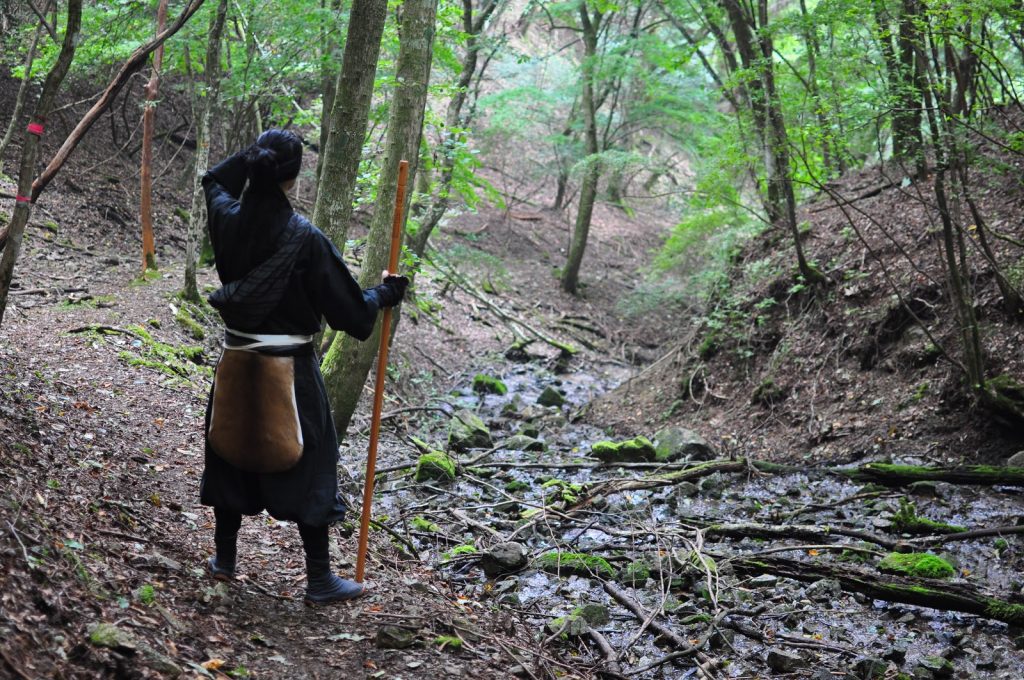
“There are historic relics from the Jomon and Yayoi era (14,000 BCE-250 ACE) that indicate immigrants from present day Korea and China settled in the hills of Iga (hour and half outside Kyoto). These people brought with them advanced techniques in agriculture, metal work and other important skills and knowledge. There was also a collection of people from the Seto Inland bay and dissidents displaced by war and other uprisings who established villages and territories in Iga. This area was significant since it was close to Nara and Kyoto, the center of political power, very accessible and easier to gather information.
From the Nara period (710-784) stretching into the Muromachi era (1336-1573) there were six main temples wielding considerable power and influence. They owned lands but needed help administering and protecting them. In Iga, a few powerful clans were directed by these temples to control the lands on their behalf. Using martial means, the powerful clans kept control. However, at some point these powerful families decided to take over ownership and control for themselves. This is somewhat of a starting point and the time we see the beginnings of the ninja.”
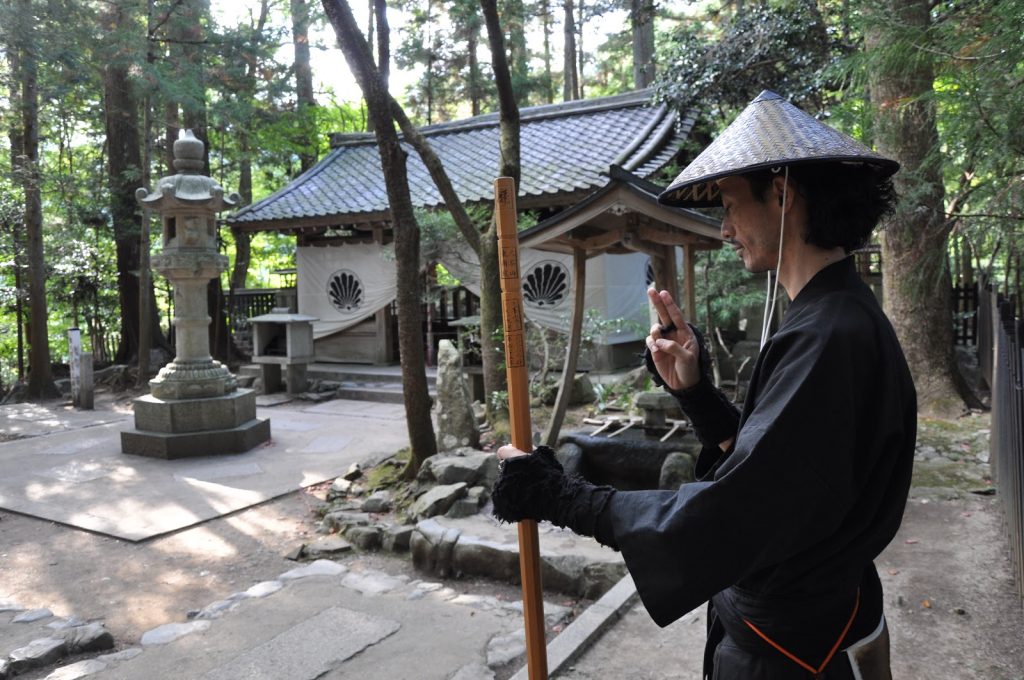
“Ninja possess many different skills, specialised knowledge and abilities. One important aspect influencing the development of ninja was shugendo. Shugendo was a practice using knowledge of nature, for example understanding the properties of plants and techniques to connect with and manipulate the natural environment.
Shugenjya or people practicing shugendo, embodied this unique connection to nature and possessed shamanist-like powers. The powerful clans learned from shugenja and yamabushi or ascetic monks and integrated this knowledge into their practice, deepening their understanding of nature. They developed important survival skills along with specialised techniques to use on missions.”
Now equipped with newfound knowledge and knowhow from the shugenja, the powerful clans added these seemingly supernatural powers to their repertoire. They now possessed the knowledge and knowhow to organize, attack and defend and develop more specialized and clandestine methods on how to gather information and survive unique missions.
“Eventually, the first shinobi or ninja group was created in and around Iga. The first reference to ninjitsu is during the Asuka period (538-710) where Prince Shotuku Taishi used the shinobi skills of being able to listen to multiple people at the same time. He apparently could listen to 10 different people’s conversations simultaneously. This represents the first time skills of ninja were demonstrated and recorded.“
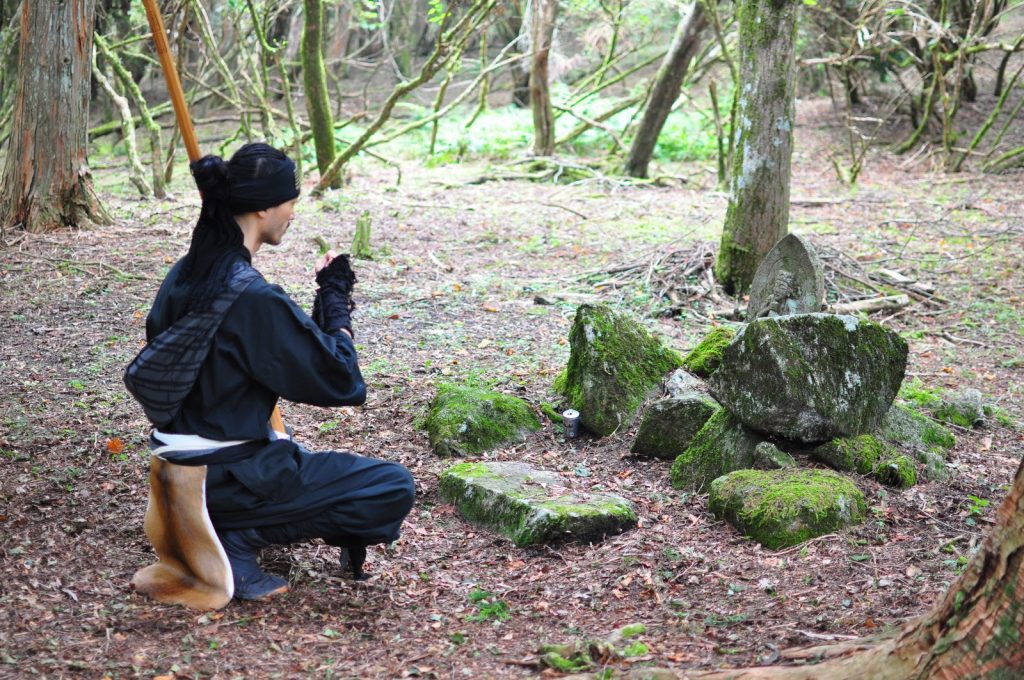
“Ninjitsu or the art of ninja, involves many mental, physical and spiritual aspects. Most of them revolve around the idea of gathering information, the main job of a ninja, but another important aspect of the ninja was the necessity to adapt to and survive in a variety of situations and circumstances. There is a ninjitsu book talking at length about these ninja skills for gathering information and survival.”
During the times of major upheaval in Japanese history-the Warring States Period; Edo Period; and Meiji Period; ninja displayed the ability to adapt to new circumstances.
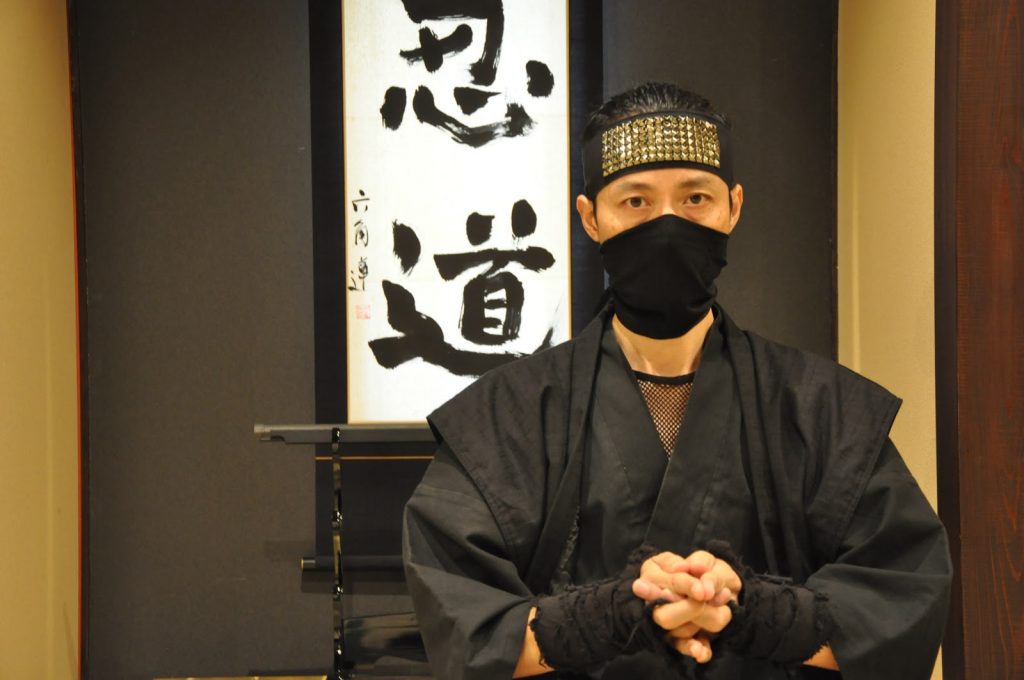
“In Edo Period (1600-1868), many ninja were employed by the bakufu or military government of the Tokugawa to monitor lords who ruled their respective domains. Even though times changed, the ninja were able to adapt to the new modern age of Meiji too. Ninja skills and knowledge of gunpowder, plants, fibers and materials were applied to a new modern economy.
Ninja founded pharmaceutical companies, used their martial and survival skills to become police, artisans and used their knowledge of gunpowder to produce fireworks. Other ninja who were involved in more of the shugendo or spiritual practice became monks or Shinto priests. The ninja were flexible and smart enough to adapt to their immediate circumstances and transfer their ninjitsu skills into modern day jobs, continuing to survive.
Back in the fifteen hundreds and sixteen hundreds no Internet or modern tools of communication existed. Depending how information was gathered and used, it equated to power and the ability to influence. Daimyo or lords could exercise power and influence to control rival daimyo, people, and other aspects of the times. The ninja were intelligence gathers, employed as freelance agents by daimyo to collect information about allies/enemies, using ninjitsu.
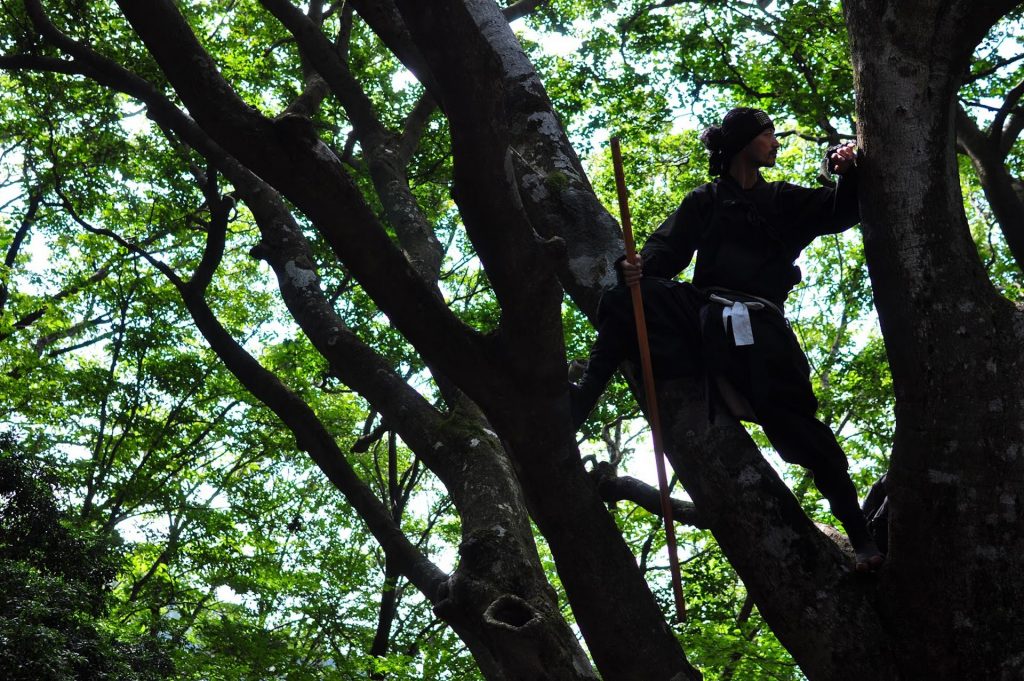
“Although assassinations or other aggressive measures were used by Ninja during the Warring States Period, it was used as a last means. At first, ninja gathered information to bring about a peaceful resolution or negotiated a deal where war could be avoided. Even though it was a state of war, the lords didn’t want to kill others and certainly didn’t want to be killed, resulting in the collection of information to try and avoid the high cost of war.”
“The worst-case scenario during the Warring States Period was a battle between two daimyo. However, depending on how information was used, it was possible to reduce hostilities and solve problems between daimyo, without military action.
The main mission for ninja was to gather information and deliver it swiftly and accurately. If for example, they found out plans of one daimyo to attack another, they could deliver that information in a way that could lead to negotiation or bring about a more peaceful resolution, before a battle even started.”
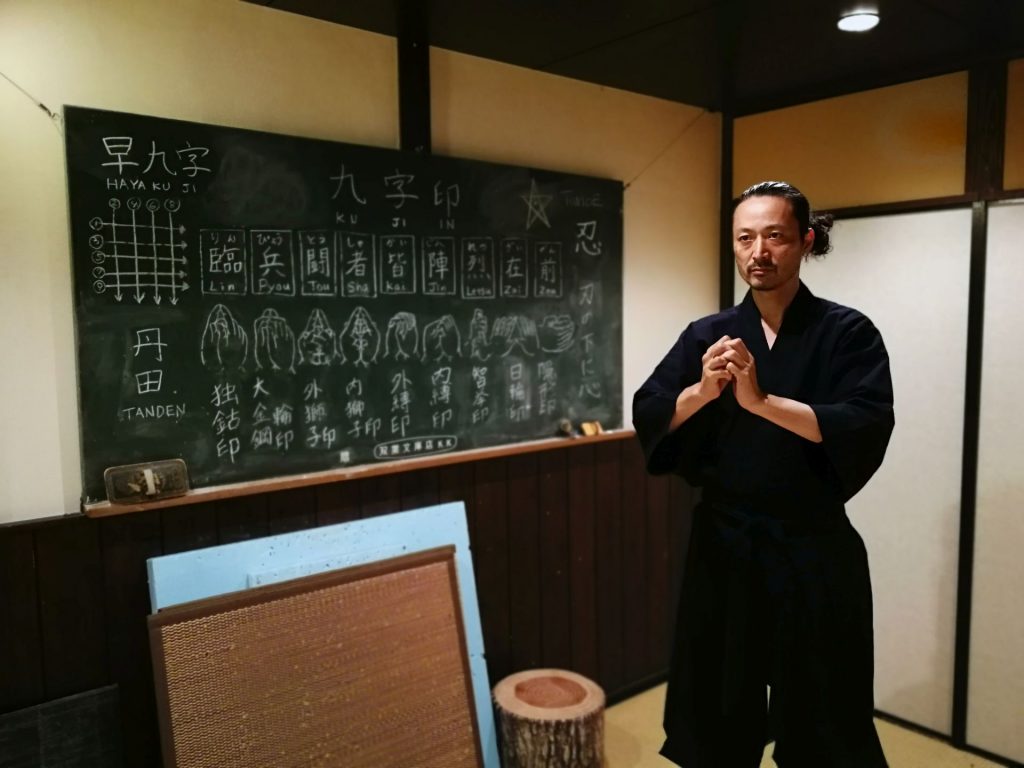
rpt
“I was in Iga until eighteen years old, then moved to Kyoto for university. While living in Iga, I heard many stories and legends about ninja in the village but at that time I didn’t have a particular interest in becoming one. Like most kids, my interest lie outside the village and I decided to attend Kyoto Zoukei Arts University in Kyoto.
For the first seventeen years after graduating, I followed the typical path of most Japanese. I went to university, graduated and lived an everyday, salary man lifestyle. In my case, I worked as a web designer. However, at forty I had a sudden epiphany. I wanted to pursue something that would take the past forty years of my life and give back to successive generations.”
Izo-san contemplated a few things but being separated from Iga for such a long time, he wanted to pursue a passion composed of his life experiences and involving his hometown of Iga.
“One of the first things that popped into my mind was ninja. Thinking about it further, I realized ninja were popularly known not only in Japan, but throughout the world and the potential to tap into ninja culture was great. I always liked ninja. It was a part of my heritage and really cool and mysterious. I decided to create a business with ninja as the focus but before that, I had to actually study ninjitsu.
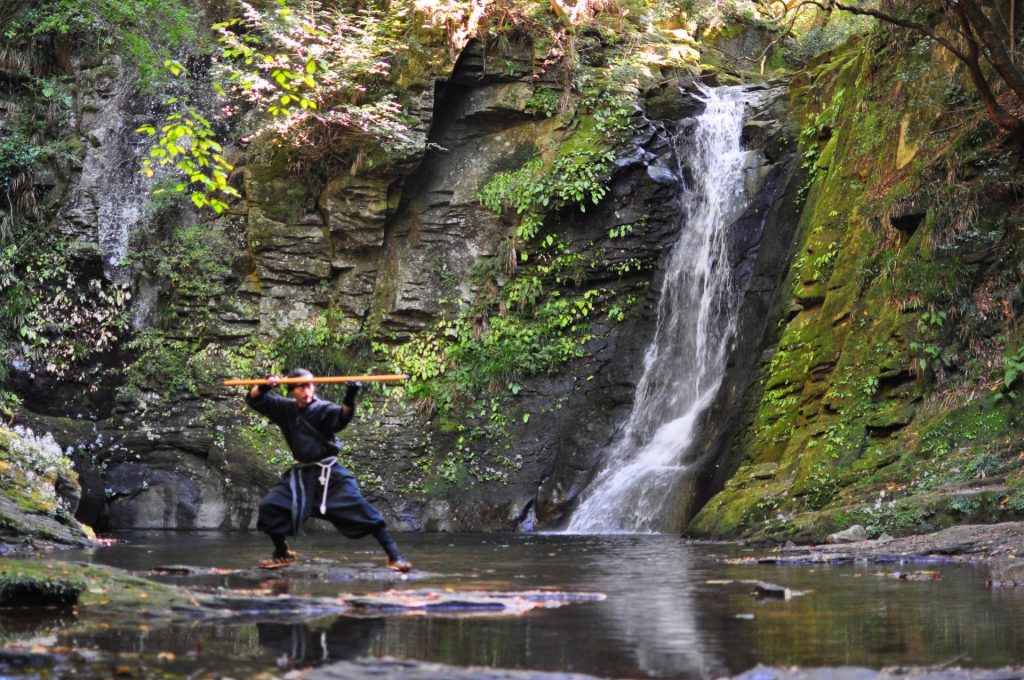
Starting at forty years old, I have trained consistently for seven years. Previously, I had a background in sports and dabbled in other martial arts, giving me somewhat of a base, plus when I was younger, when I played in the mountains and in the village, I was exposed to elements of some of the actual ninja training.
During my time in Kyoto at university, I realized how important Kyoto could be as a location, due to the unbelievable number of foreign visitors. Although Iga is the origin of ninja, I realized Kyoto was the best place to introduce visitors to authentic ninja culture. I opened up the Ninja Dojo four years ago to introduce Iga style ninja culture to visitors. There wasn’t a place teaching Iga ninja style or place without the tropes of Toei movie studios-famous studio in Kyoto where many samurai and ninja movies and shows have been filmed. “
Izo-san’s concept at his Ninja Dojo lies on teaching real ninjitsu arts with a depth, penetrating into the spiritual and mental aspects of the practitioner. He adapts it to suit the level of the visitor or student.
His style is based on nindo or “the way of ninja,” similar to other approaches used in chado (the way of tea) or other traditional arts. It’s a practice involving not only physical martial arts, but a mental and spiritual pursuit in the transformation of yourself as well, similar to karate, judo or other martial arts.
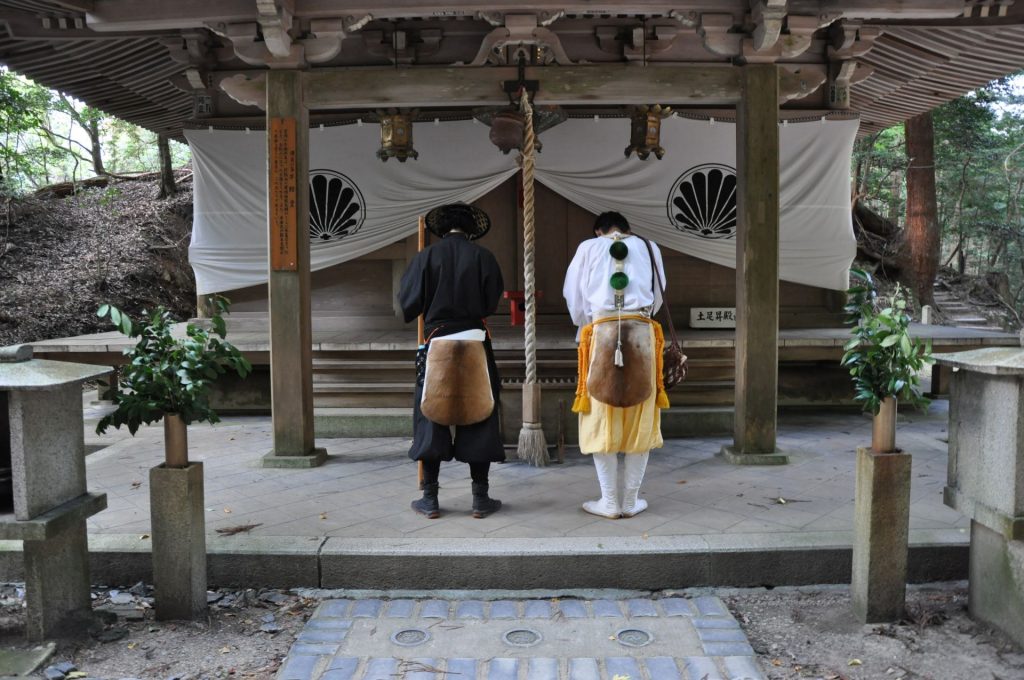
“Our modern lives have become filled with material wealth, fostering greed and a desire of the “haves” to impose their will on others, causing much conflict over increasingly scarce resources. I believe the philosophy in ninjitsu could possibly be of value in teaching us how to co-exist in a more harmonious and peaceful manner once our society realizes it’s time to move on from this capitalist dominated mentality, we currently live with on a daily basis.”
Human relationships and cultivating good relationships is very important. No matter the time or place in human history, this is true. The skills ninja used back in history to spy etc. are no longer necessary in our everyday lives today, but Izo-san believes other philosophy embodied in ninjitsu, still has applications to our modern day lives.
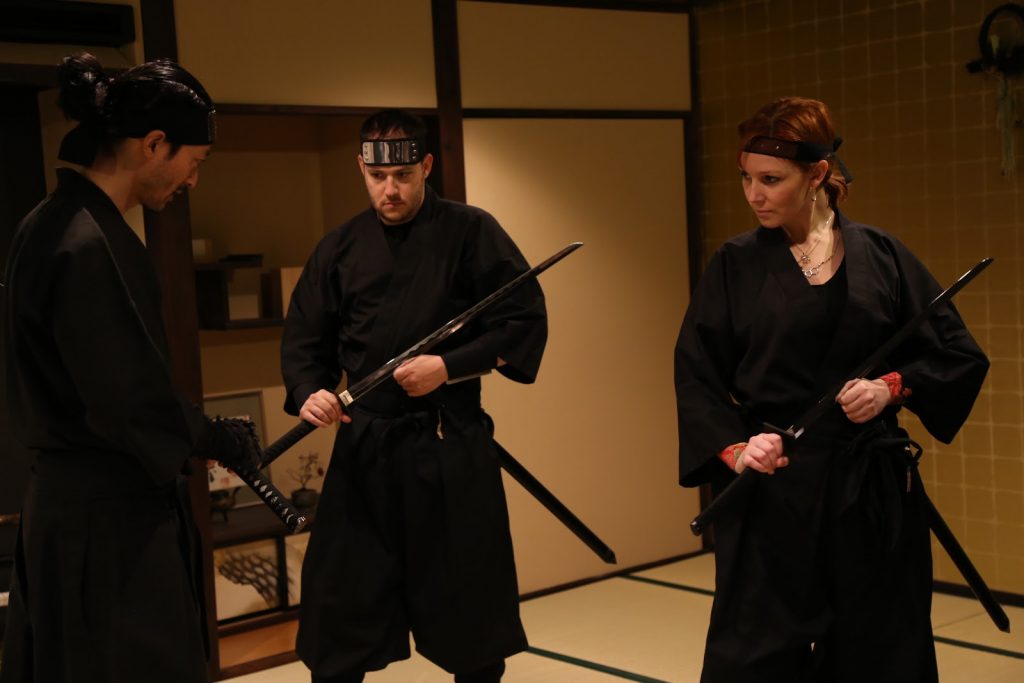
The next time you’re in Kyoto, join Izo-san for a lesson and glimpse into the modern world of ninja.
Think of me like your local friend who happens to be a professional guide. Originally from Canada, I’ve lived in Kyoto for the past 18 years, plus worked at one of the best hotels in Kyoto for 2 years. Through my interviews with locals, I hope you get a feel for Kyoto by listening to their unique stories.
If you’re interested in tours or struggling to plan your trip to Kyoto, I offer tours and/or personalised trip consultations for Kyoto and beyond. Check out my website Hands On Kyoto. I can’t wait to help you discover the hidden side of Kyoto!